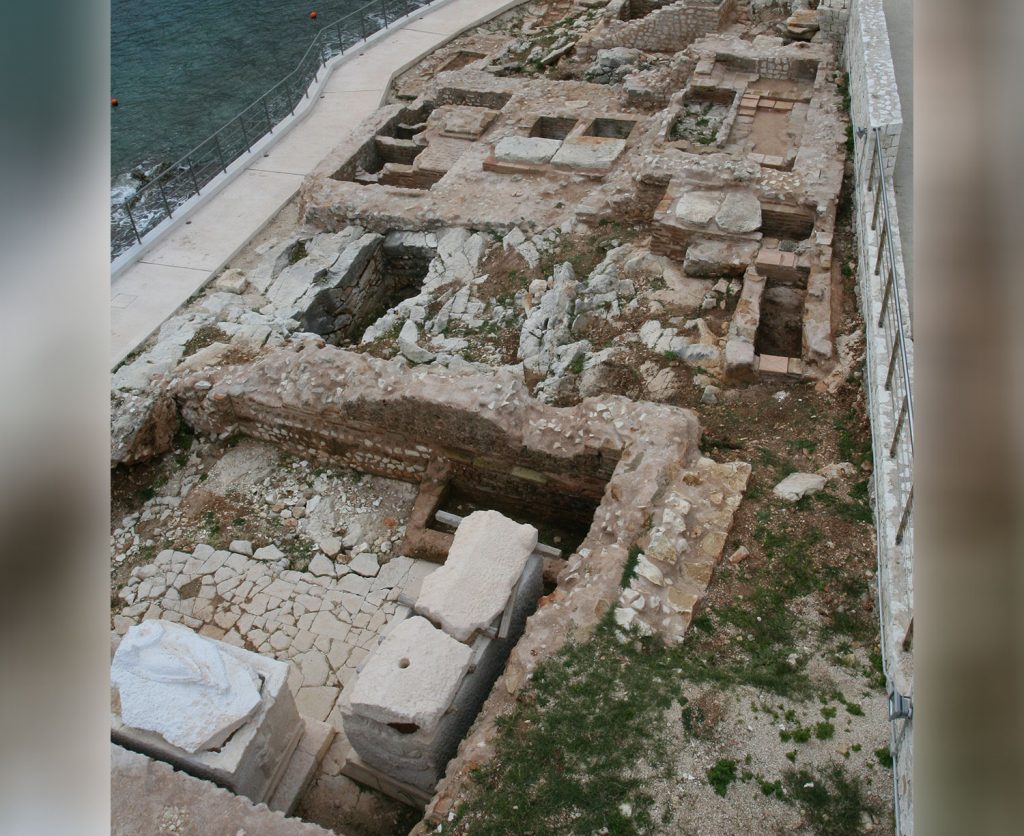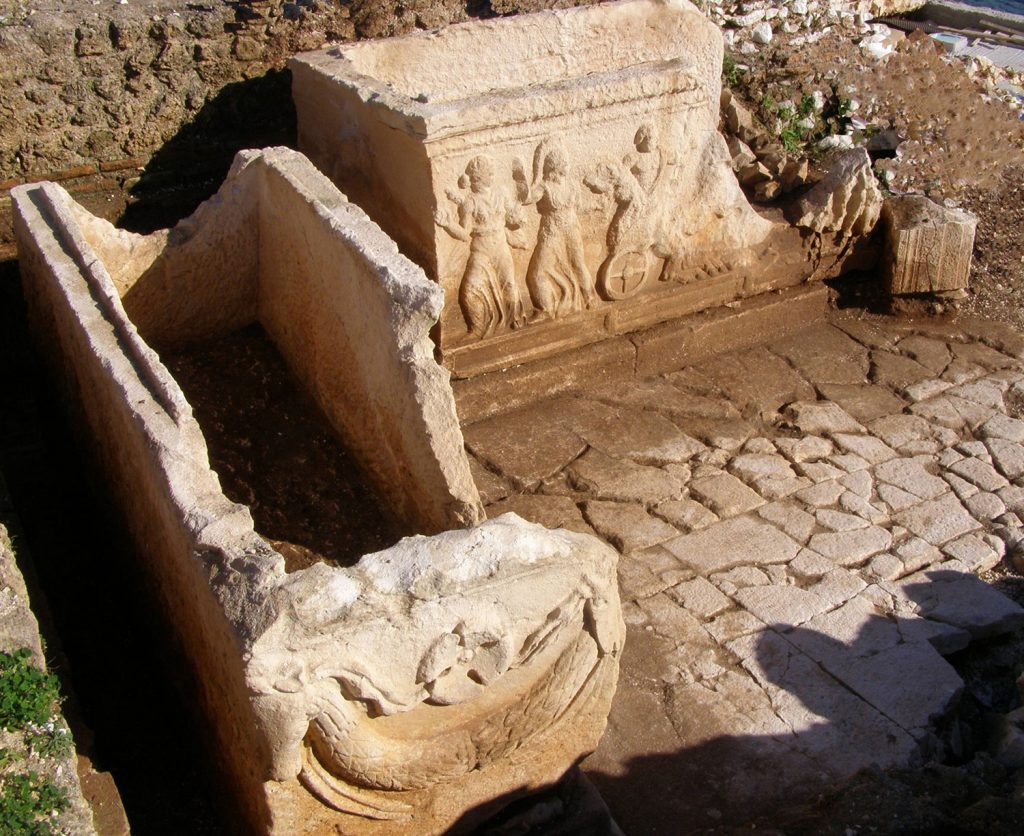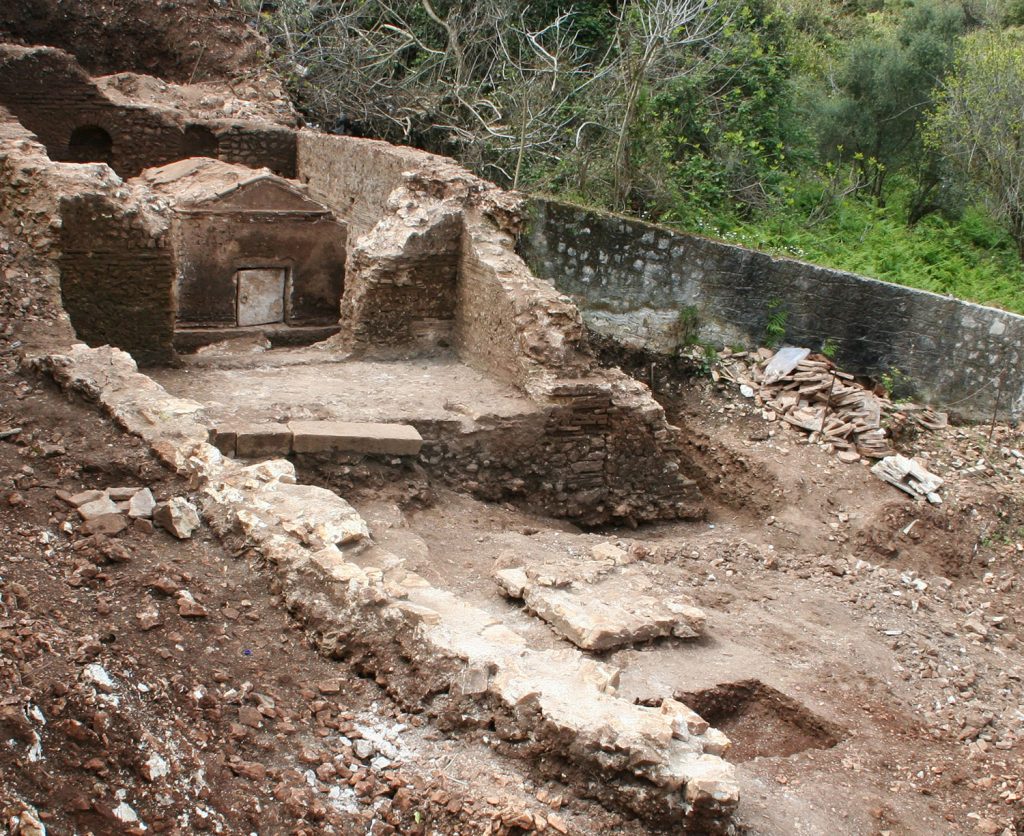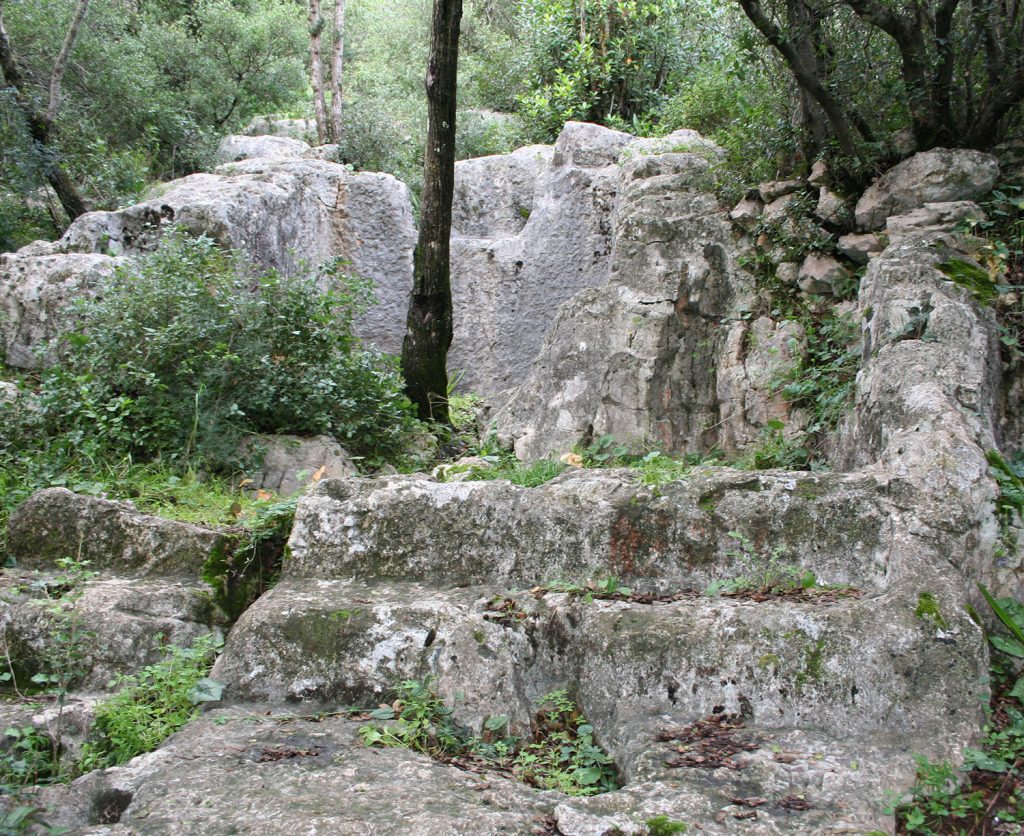The Roman cemetery of Fiscardo in Agios Andreas Bay after restoration, viewed from North.

The Roman cemetery of Fiscardo in Agios Andreas Bay after restoration, viewed from North.
nekrotafeia_tafika_mnhmeia_panormou_1

The Roman cemetery of Fiscardo in Agios Andreas Bay after restoration, viewed from North.

View of the sarcophagi inside the mausoleum – temple-shaped burial chamber from the SW.

The mausoleum – temple-shaped burial chamber at the site of “Tigania” at Fiskardo.

The temple-shaped burial chamber at the site of “Larni” or “the throne of Queen Fiskarda”
The most interesting monuments of the city of Panormos are related to death. Their architecture shows clear influences from other known cities of the Roman territory.
The extensive cemetery of Roman and Late Roman times stretched on the rocky coast of the NW side of Agios Andreas Bay. Tombs of various types have been investigated here: cist tombs built above the ground, cists within trenches dug in bedrock, small monumental tombs (like small oikoi), tile-covered, pit tombs, enchytrismoi (in pots) and stone sarcophagi. Ten tombs are included in a burial precinct and three in a burial chamber – mausoleum. Two sarcophagi decorated with relief scenes depicting common burial subjects of those times were found inside the mausoleum. The scene of Persephone’s abduction by Plouton is depicted on one of them. The sarcophagi are today exhibited in Same’s Archaeological Collection, protected from extra damage, while replicas were placed in the cemetery after restoration works were concluded.
The cemetery flourished since the 2nd to the 4th cent. AD.
The burial monuments and especially the chambers or mausolea are the most impressive monuments of the city and the island. They are located at various sites. Although it is possible to group them in various architectural types, each one of them has special features.
Mausolea are buildings of large dimensions, including one or more tombs, not necessarily of one single type, and occasionally benches for the deposition of offerings. In some cases, however, the structures are so badly preserved that it is not possible to conclude on the existence or not of tombs and structures inside them. Based on their plan, mausolea are grouped into two main types: a. the simple, one-roomed chambers and b. the temple-shaped burial monuments.
The most impressive mausolea of the type of temple-shaped burial chambers are the following:
a) The mausoleum at the site of Tigania, in the centre of today’s village. The main chamber includes an arched tomb with a pedimental front, resembling a small oikos, as well as a stone sarcophagus with a pedimental cover and a built, cist tomb. The chamber’s rear wall had two niches for placing urns or busts of the deceased – imagines. In Early Byzantine times, the chamber was reused for two infants’ enchytrismoi – burials in pots. The mausoleum was in use since the 1st cent. AD until the mid-4th cent. AD. A reconstruction of part of the arched tomb is included in the exhibition at Same’s Archaeological Collection.
b) The mausoleum at the site of Larni or “Throne of Queen Fiscarda”, to the SW of the village. The monument is hewn in bedrock, with built wall upper structure. Its impressive form and the niche in the rear wall that would have been used for placing an urn or a bust and looks like a seat, made the locals imagine that the monument was a royal throne. Thus, the mausoleum became known as the “Throne of Queen Fiscarda”.
Burial practices followed in the cemetery and the city’s burial monuments allude to similar practices attested in other known cities of Roman times.